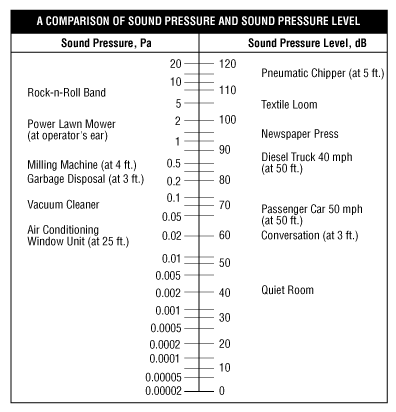i need a sound sensor for Noise Pollution detector application. can anyone help me to find sensor that can dete sound level upto 140dB. i need this because my application alerts user if sound level is above 115 dB. thanks.
Clearly you need a microphone, but these are available in a bewildering number of styles and technologies. The widest dynamic range is probably the moving coil microphone, essentially a miniature loudspeaker used "backwards" so movement in a strong magnetic field of the coil, attached to a diaphragm, produces an electrical signal output. One variation of this is the dynamic ribbon microphone, which uses a conductive ribbon diaphragm suspended between two magnetic poles to convert sound pressure variations into an electrical signal. Condenser microphones, and their varient, electret microphones, are quite sensitive and rugged for field use. The latest variation is the MEMS (Micro Electo-Mechanical System) microphone, machined from a silicon wafer using modern semiconductor fabrication techniques. So... which one to use?
140 dB (above 0 dB = 0.00002 Pa) is quite loud. See chart below for comparative levels found in the normal environment:
This SPL (Sound Pressure Level) of 140 dB, or 200 Pa Sound Pressure, is well above levels where sustained exposure will cause irreversible hearing loss.
I see two possible problems: (1) the sound pressure may exceed the range of the sound transducer (or drive it into a non-linear region) and (2) calibration (as pointed out in post #8 by
@AnalogKid). It might behoove you to chose a manufacturer who already makes and sells SPL meters as the supplier for your microphone. They can probably supply calibration data for the microphone you choose.
Several that appear suitable can be found here. The model NOR1229 might be an economical choice, and unlike some others, doesn't require a polarization power supply.
For further investigation and other microphones,
visit this Google page.
Why anyone would want to try to build an SPL when
low-cost versions are readily available is beyond my understanding... of course some modification will be required to obtain an alarm output.
You can spend thousands of dollars for professional gear, but it sounds like all you need is a GO/NO-GO output that signals when the SPL is above 115 dB with "headroom" up to 140 dB. So maybe you can construct this with an
inexpensive electret microphone purchased from eBay and add a minimal amount of electronics. Be aware that many of these El-cheapo electrets have "built in" FET transimpedance amplifiers (an electret is essentially an infinite resistance current source) and require an external low-voltage supply to bias the FET. This combination of FET, drain resistor, and power supply will limit the dynamic range of the microphone.
If ambient noise is a health problem, document it with a calibrated Sound Pressure Meter and then issue ear protection. Disposable, self-shaping, foam ear plugs are effective in most situations, and these can be combined with over-the-ear sound muffs for very high noise locations.
Good luck with your project. Come back here if you have questions on how to interface the microphone you choose to signal conditioning electronics.

